Outstanding programmers of the USSR: Yekaterina Logvinovna Yushchenko
Yekaterina Logvinovna Yushchenko is the first woman in the USSR to become a doctor of physical and mathematical sciences thanks to innovative achievements in programming. She worked with Europe’s first MESM computer and created one of the first high-level programming languages with indirect addressing during programming. It was thanks to its address language that the dependence on the location of the program in memory disappeared. Also, Yekaterina Yushchenko became the founder of the first Soviet school of theoretical programming. She was a talented female developer who went through "fire, water, and copper pipes."
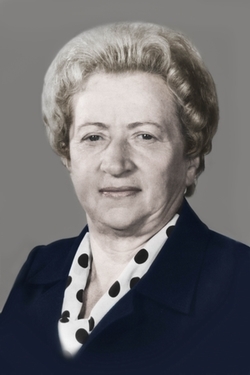
Yekaterina Logvinovna Yushchenko (1919-2001)
Yekaterina Logvinovna Yushchenko was born (nee Rvacheva) on December 8, 1919 in the historic city of Chyhyryn (central Ukraine). Father Logvin Fedorovich Rvachev taught history and geography, his mother was a housewife. In 1937, at the denunciation of his father, he was arrested as an "enemy of Soviet power." Subsequently, he was sentenced to 10 years in prison. The same fate befell the mother of Catherine, who went after her husband in order to prove his innocence. The documents brought by her, indicating that Logvin Fedorovich participated in the revolutionary movement, were destroyed. And only in 1954 after the death of Stalin, Yushchenko’s parents were rehabilitated posthumously due to the lack of corpus delicti.
When this family tragedy unfolded, Catherine was 17 years old. The girl studied in the first year of the Faculty of Physics and Mathematics at Kiev University. But after the news of the arrest of her parents, she was expelled from the school as the daughter of an "enemy of the people." Yushchenko did not come to terms with her fate and in 1938 she submitted documents to Moscow University. And they accepted her. But since the hostel was not provided, she was forced to refuse the offer. Then the girl turned to Voronezh University, where, according to the stories of acquaintances, all students were provided with housing. Yushchenko agreed to study, only without a scholarship (again, because of the arrested parents). The wanderings of the girl ended thanks to the occasion. Catherine saw an announcement that the Uzbek State University (Samarkand) announces a student enrollment, provides them with housing and a scholarship, and also pays the road. Yushchenko seized the opportunity and went to Samarkand. She successfully entered the university and fully engaged in studies.

Yushchenko with fellow students, (40th)
During the war, the Uzbek University was combined with the Central Asian State University in Tashkent and the student was redirected there. She continued her studies and at the same time got a job at a military enterprise engaged in the production of sights for tank guns.
At the end of the university, Yushchenko faced the main question - what to do next? The future was foggy and uncertain. The war was rampant and seemed not to stop, no one gave out a job assignment. Then the girl decided to answer the call to help the miners of the Angren coal plant to increase coal production (since the Donbass was occupied by the Nazis). Together with other Komsomol girls, Yushchenko went to the city of Angren-Stalin (150 km from Tashkent). Catherine was appointed to the position of a blasting pilot. The work was incredibly difficult, especially for an inexperienced and young girl. She yearned for home and for science, trying to find solace in writing poetry. Here is one of them:
My city
I abandoned the city, the noise of the streets, the theater
I went to the mountains to fight for coal.
Itself, voluntarily, on a new journey
My beloved city, understand and forgive ...
Do you remember, there used to be days in college ? You
could part with you only in the summer:
Home, rest, excursion, air, water
Life is a full bowl, golden years.
But all the same, I missed your noise
Your talk seemed so expensive
And now I arrived in other parts of the
city Forgive me, city, you can’t be sad here ...
A dream in the morning bothers us with a buzzer He
calls: “Girls, be ready for work!”
And even me Neither Planck nor Bernstein is needed.
What I studied you without knowing the nights
I will not forget you, I will come back to you
As soon as we break the ridge of evil enemies.
You understand, I hope my hometown
When I get back, how will I meet you ...
In 1943, an order came to the plant to return to school all who have completed pedagogical education. Yushchenko was sent as a teacher to a Tashkent high school, where she taught mathematics and physics for almost 2 years.
Only after the war ended did Yushchenko return to her native Ukraine and was able to fully engage in science. In Lviv, just opened a branch of the Institute of Mathematics of the Academy of Sciences of Ukraine. The future academician of the Ukrainian Academy of Sciences Boris Vladimirovich Gnedenko discerned the potential in Catherine and offered a job in his department of probability theory. The woman dealt with special issues in probability theory and obtained original results on multidimensional stable distribution laws that are important for the development of quantum mechanics.
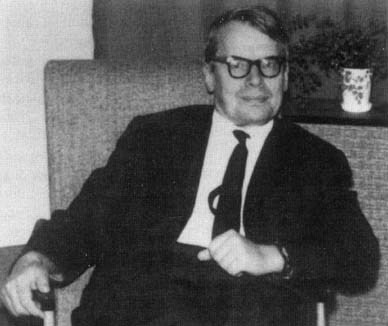
Academician of the Academy of Sciences of Ukraine B.V. Gnedenko
In 1950, Yushchenko successfully defended her thesis. In the same year, Gnedenko was elected a full member of the Academy of Sciences of Ukraine, and his department was transferred to the Kiev Institute of Mathematics of the Academy of Sciences of Ukraine. He suggested that Yushchenko also move to Kiev.
The Institute of Mathematics was actively developing and was taking off during these years. Its director, academician Alexander Yulievich Ishlinsky, was engaged in the theory of gyroscopes - a problem that is quite relevant for the time when the construction of satellites was in its infancy. Research required continuous complex calculations. For this reason, a set of computing and analytical machines was purchased. In the basement of the building of the Presidium of the Academy of Sciences of Ukraine, an entire computing laboratory was equipped, the head of which was appointed Yekaterina Logvinovna.
In 1954, on the initiative of Academician Gnedenko, the laboratory of Sergey Alekseevich Lebedev was transferred to the Institute of Mathematics, together with the first MESM computer in Europe. The development of this Small electronic calculating machine was carried out for about two years (1949 to 1951). It was created as a model or model of a Large Electronic Computer (BESM). But after the first success in computing, it was decided to bring the layout to a full-fledged computer that can perform real tasks. A group of scientists joined the operation of MESM, among whom was Yushchenko.
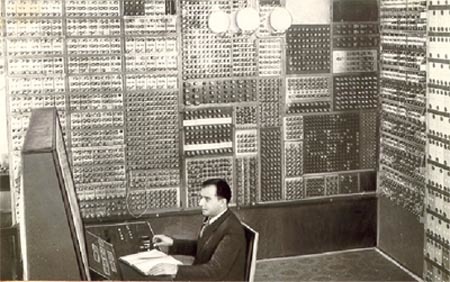
The MESM computer was operated until 1957, after which he transferred to the KPI for educational purposes
MESM had limited internal memory, low speed and instability caused by a large number of electronic tubes. All this forced compilers to refine their work and find various ways to use the internal language of the computer. The compilation of each program was considered as a solution to an individual problem. Programmers were looking for cost-effective solutions using various features of the computer command system.
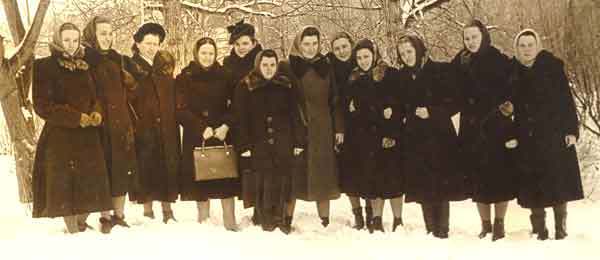
Team of programmers and calculators (1956)
According to a colleague and programmer Nadezhda Mikhailovna Mishchenko:
In the process, it became clear that solving complex problems by writing just machine programs is a very difficult matter. As a result, a need arose to develop a “high-level” programming language. And at the same time, there was a need to create an appropriate translator for communication between a person and a machine.
The work done by Aleksey Andreevich Lyapunov, correspondent of the USSR Academy of Sciences, who proposed an operator-based programming method, became a source of inspiration for the development of theoretical programming. In 1955, Yushchenko, with the help of Soviet mathematician Vladimir Semenovich Korolyuk, developed an address programming language. He embodied two general principles of computer operation - targeting and program management. Creating a convenient system of concepts for describing the architecture of a computer and its command system, the authors added a means of manipulating addresses of the second rank.

Doctor of Physical and Mathematical Sciences V.S. Korolyuk
An address programming language is an algorithmic language that focuses on applications as the basis for creating programming languages. It is based on the relationship of address and content, formalization of this relationship allows us to describe in a simple form the operations carried out on a Digital Computing Machine (digital computer).
A description of a computational process in an address language is called an address algorithm. Together with many elements of information (source data, intermediate and final results), many addresses are considered. In the particular case, these addresses are the cell numbers of the digital storage device in which the source data is located. Each piece of information uniquely corresponds to a specific address. Similarly, some addresses can unambiguously correspond to other addresses. If b is an information element or address that uniquely corresponds to address a, then in the address language such a combination will be the formula 'a = b. An expression that is formed from mathematical symbols and the sign (') is called an address function. The calculation of new values and their sending to specific addresses is determined by the address formula, that is, two address functions connected by the send symbol (=>). In this case, the entry b => a means that the information item or address b is recorded at address a.

Yushchenko E. L. Address programming (1963)
It was the creation of the address language that became the first fundamental achievement of the scientific school of theoretical programming. The address language became the basis for the emergence of the first programming languages such as Fortran (1958), Kobol (1959) and Algol (1960). He also outstripped not only the emergence of programming languages with an indirect addressing apparatus, but also the emergence of assemblers (translators of the source code of a program). And his designs became part of modern languages.
From this address language, translators were created in the Academy of Sciences of the Ukrainian SSR already in the initial period of cybernetics development, facilitating the programming process for the first and second generation computers available in the USSR at that time (Kiev, Ural-1, and M-20). Subsequently, other domestic computers supplied similar translators.
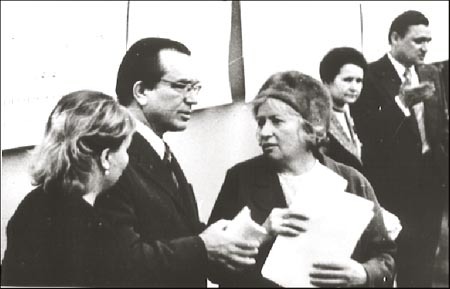
Yekaterina Yushchenko and Soviet mathematician, cybernetics, academician of the USSR Academy of Sciences Viktor Mikhailovich Glushkov (60th)
Yushchenko made an invaluable contribution to the development of theoretical programming and left behind a lot of significant scientific works. Together with B. V. Gnedenko and V. S. Korolyuk, she wrote the first programming textbook in the USSR, “Programming Elements”. The book was published in 1961. Reprinted in 1964, and in the same year the translations of the publication were published in the German Democratic Republic and Hungary, and in 1969 in France.

Over the following years, Yushchenko prepared 45 candidates and 11 doctors of sciences. The Kiev school of theoretical programming has become famous far beyond the borders of the Soviet Union. Ekaterina Logvinovna was awarded two State Prizes of the Ukrainian SSR and the Prize of the Council of Ministers of the USSR, and for the theoretical developments in the field of computer algebra - the Glushkov Academic Prize. She was also awarded the Order of Princess Olga.
This talented female programmer received 5 copyright certificates. She is the author of more than 200 scientific papers, including 23 monographs and study guides, some of which have been translated and published in Germany, the Czech Republic, Hungary, France, and Denmark.

Yekaterina Logvinovna Yushchenko (1919-2001)
From biography
Yekaterina Logvinovna Yushchenko was born (nee Rvacheva) on December 8, 1919 in the historic city of Chyhyryn (central Ukraine). Father Logvin Fedorovich Rvachev taught history and geography, his mother was a housewife. In 1937, at the denunciation of his father, he was arrested as an "enemy of Soviet power." Subsequently, he was sentenced to 10 years in prison. The same fate befell the mother of Catherine, who went after her husband in order to prove his innocence. The documents brought by her, indicating that Logvin Fedorovich participated in the revolutionary movement, were destroyed. And only in 1954 after the death of Stalin, Yushchenko’s parents were rehabilitated posthumously due to the lack of corpus delicti.
When this family tragedy unfolded, Catherine was 17 years old. The girl studied in the first year of the Faculty of Physics and Mathematics at Kiev University. But after the news of the arrest of her parents, she was expelled from the school as the daughter of an "enemy of the people." Yushchenko did not come to terms with her fate and in 1938 she submitted documents to Moscow University. And they accepted her. But since the hostel was not provided, she was forced to refuse the offer. Then the girl turned to Voronezh University, where, according to the stories of acquaintances, all students were provided with housing. Yushchenko agreed to study, only without a scholarship (again, because of the arrested parents). The wanderings of the girl ended thanks to the occasion. Catherine saw an announcement that the Uzbek State University (Samarkand) announces a student enrollment, provides them with housing and a scholarship, and also pays the road. Yushchenko seized the opportunity and went to Samarkand. She successfully entered the university and fully engaged in studies.

Yushchenko with fellow students, (40th)
During the war, the Uzbek University was combined with the Central Asian State University in Tashkent and the student was redirected there. She continued her studies and at the same time got a job at a military enterprise engaged in the production of sights for tank guns.
At the end of the university, Yushchenko faced the main question - what to do next? The future was foggy and uncertain. The war was rampant and seemed not to stop, no one gave out a job assignment. Then the girl decided to answer the call to help the miners of the Angren coal plant to increase coal production (since the Donbass was occupied by the Nazis). Together with other Komsomol girls, Yushchenko went to the city of Angren-Stalin (150 km from Tashkent). Catherine was appointed to the position of a blasting pilot. The work was incredibly difficult, especially for an inexperienced and young girl. She yearned for home and for science, trying to find solace in writing poetry. Here is one of them:
My city
I abandoned the city, the noise of the streets, the theater
I went to the mountains to fight for coal.
Itself, voluntarily, on a new journey
My beloved city, understand and forgive ...
Do you remember, there used to be days in college ? You
could part with you only in the summer:
Home, rest, excursion, air, water
Life is a full bowl, golden years.
But all the same, I missed your noise
Your talk seemed so expensive
And now I arrived in other parts of the
city Forgive me, city, you can’t be sad here ...
A dream in the morning bothers us with a buzzer He
calls: “Girls, be ready for work!”
And even me Neither Planck nor Bernstein is needed.
What I studied you without knowing the nights
I will not forget you, I will come back to you
As soon as we break the ridge of evil enemies.
You understand, I hope my hometown
When I get back, how will I meet you ...
In 1943, an order came to the plant to return to school all who have completed pedagogical education. Yushchenko was sent as a teacher to a Tashkent high school, where she taught mathematics and physics for almost 2 years.
Only after the war ended did Yushchenko return to her native Ukraine and was able to fully engage in science. In Lviv, just opened a branch of the Institute of Mathematics of the Academy of Sciences of Ukraine. The future academician of the Ukrainian Academy of Sciences Boris Vladimirovich Gnedenko discerned the potential in Catherine and offered a job in his department of probability theory. The woman dealt with special issues in probability theory and obtained original results on multidimensional stable distribution laws that are important for the development of quantum mechanics.

Academician of the Academy of Sciences of Ukraine B.V. Gnedenko
In 1950, Yushchenko successfully defended her thesis. In the same year, Gnedenko was elected a full member of the Academy of Sciences of Ukraine, and his department was transferred to the Kiev Institute of Mathematics of the Academy of Sciences of Ukraine. He suggested that Yushchenko also move to Kiev.
Work with computer MESM
The Institute of Mathematics was actively developing and was taking off during these years. Its director, academician Alexander Yulievich Ishlinsky, was engaged in the theory of gyroscopes - a problem that is quite relevant for the time when the construction of satellites was in its infancy. Research required continuous complex calculations. For this reason, a set of computing and analytical machines was purchased. In the basement of the building of the Presidium of the Academy of Sciences of Ukraine, an entire computing laboratory was equipped, the head of which was appointed Yekaterina Logvinovna.
In 1954, on the initiative of Academician Gnedenko, the laboratory of Sergey Alekseevich Lebedev was transferred to the Institute of Mathematics, together with the first MESM computer in Europe. The development of this Small electronic calculating machine was carried out for about two years (1949 to 1951). It was created as a model or model of a Large Electronic Computer (BESM). But after the first success in computing, it was decided to bring the layout to a full-fledged computer that can perform real tasks. A group of scientists joined the operation of MESM, among whom was Yushchenko.

The MESM computer was operated until 1957, after which he transferred to the KPI for educational purposes
MESM had limited internal memory, low speed and instability caused by a large number of electronic tubes. All this forced compilers to refine their work and find various ways to use the internal language of the computer. The compilation of each program was considered as a solution to an individual problem. Programmers were looking for cost-effective solutions using various features of the computer command system.

Team of programmers and calculators (1956)
According to a colleague and programmer Nadezhda Mikhailovna Mishchenko:
This is a photograph of programmers and calculators led by Ekaterina Logvinovna (she is third on the left in the photograph). The picture was taken as a gift to women before the holiday of March 8 (1956). To the left of Yushchenko are programmers Yadrenko Engelina Konstantinovna and Zaika Lidiya Dmitrievna. On the right is Svyatokha Aleksandra Petrovna (head of the group of calculators who are on the right hand side of her from the picture). Women worked on ReinMetal desktop electric computers. Their responsibilities included fulfilling the tasks of programmers for calculating by formulas, in particular, in order to obtain the so-called control points (that is, data necessary for debugging programs at MESM). The calculators were also involved in entering data and programs into the MESM machine.
In the process, it became clear that solving complex problems by writing just machine programs is a very difficult matter. As a result, a need arose to develop a “high-level” programming language. And at the same time, there was a need to create an appropriate translator for communication between a person and a machine.
Address programming language
The work done by Aleksey Andreevich Lyapunov, correspondent of the USSR Academy of Sciences, who proposed an operator-based programming method, became a source of inspiration for the development of theoretical programming. In 1955, Yushchenko, with the help of Soviet mathematician Vladimir Semenovich Korolyuk, developed an address programming language. He embodied two general principles of computer operation - targeting and program management. Creating a convenient system of concepts for describing the architecture of a computer and its command system, the authors added a means of manipulating addresses of the second rank.

Doctor of Physical and Mathematical Sciences V.S. Korolyuk
An address programming language is an algorithmic language that focuses on applications as the basis for creating programming languages. It is based on the relationship of address and content, formalization of this relationship allows us to describe in a simple form the operations carried out on a Digital Computing Machine (digital computer).
A description of a computational process in an address language is called an address algorithm. Together with many elements of information (source data, intermediate and final results), many addresses are considered. In the particular case, these addresses are the cell numbers of the digital storage device in which the source data is located. Each piece of information uniquely corresponds to a specific address. Similarly, some addresses can unambiguously correspond to other addresses. If b is an information element or address that uniquely corresponds to address a, then in the address language such a combination will be the formula 'a = b. An expression that is formed from mathematical symbols and the sign (') is called an address function. The calculation of new values and their sending to specific addresses is determined by the address formula, that is, two address functions connected by the send symbol (=>). In this case, the entry b => a means that the information item or address b is recorded at address a.

Yushchenko E. L. Address programming (1963)
It was the creation of the address language that became the first fundamental achievement of the scientific school of theoretical programming. The address language became the basis for the emergence of the first programming languages such as Fortran (1958), Kobol (1959) and Algol (1960). He also outstripped not only the emergence of programming languages with an indirect addressing apparatus, but also the emergence of assemblers (translators of the source code of a program). And his designs became part of modern languages.
From this address language, translators were created in the Academy of Sciences of the Ukrainian SSR already in the initial period of cybernetics development, facilitating the programming process for the first and second generation computers available in the USSR at that time (Kiev, Ural-1, and M-20). Subsequently, other domestic computers supplied similar translators.

Yekaterina Yushchenko and Soviet mathematician, cybernetics, academician of the USSR Academy of Sciences Viktor Mikhailovich Glushkov (60th)
Ekaterina Logvinovna - an outstanding person
Yushchenko made an invaluable contribution to the development of theoretical programming and left behind a lot of significant scientific works. Together with B. V. Gnedenko and V. S. Korolyuk, she wrote the first programming textbook in the USSR, “Programming Elements”. The book was published in 1961. Reprinted in 1964, and in the same year the translations of the publication were published in the German Democratic Republic and Hungary, and in 1969 in France.

Over the following years, Yushchenko prepared 45 candidates and 11 doctors of sciences. The Kiev school of theoretical programming has become famous far beyond the borders of the Soviet Union. Ekaterina Logvinovna was awarded two State Prizes of the Ukrainian SSR and the Prize of the Council of Ministers of the USSR, and for the theoretical developments in the field of computer algebra - the Glushkov Academic Prize. She was also awarded the Order of Princess Olga.
This talented female programmer received 5 copyright certificates. She is the author of more than 200 scientific papers, including 23 monographs and study guides, some of which have been translated and published in Germany, the Czech Republic, Hungary, France, and Denmark.
